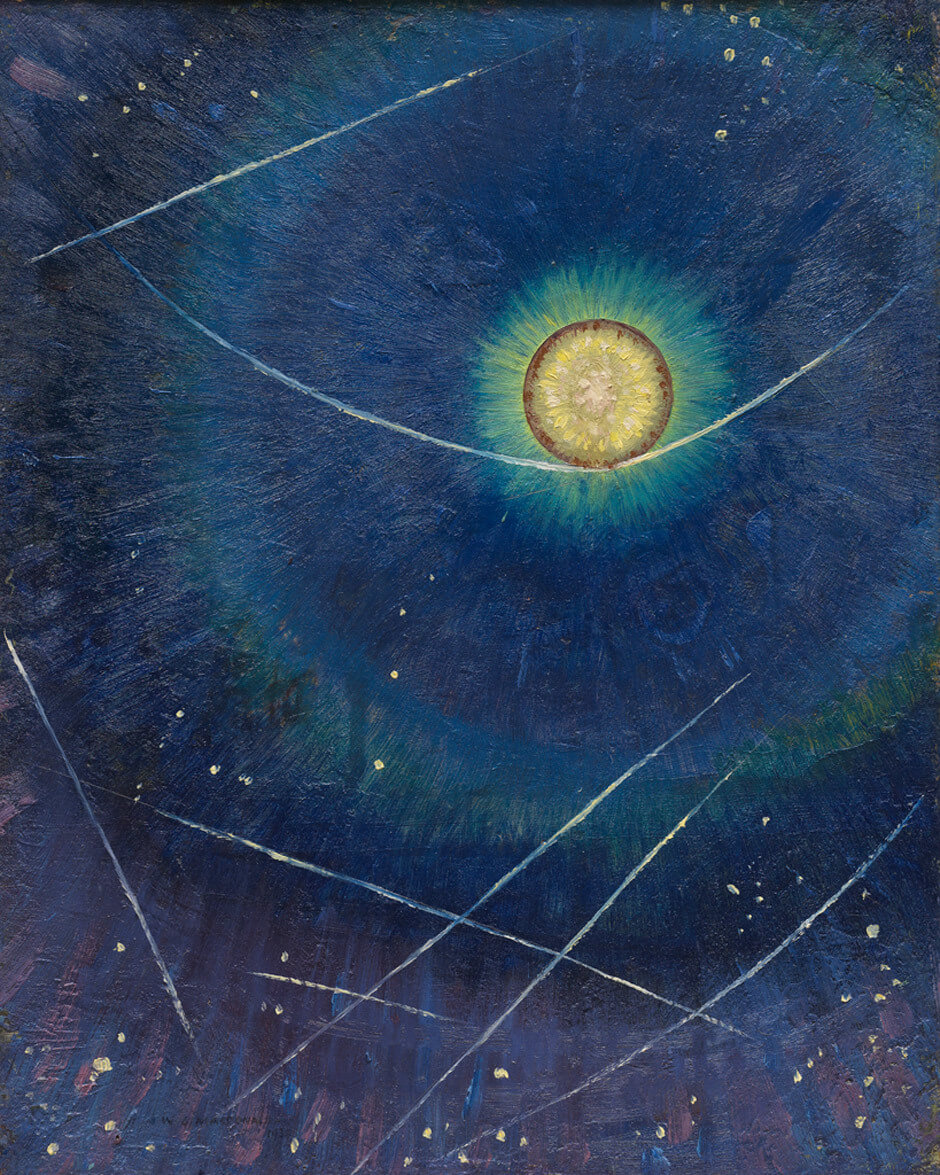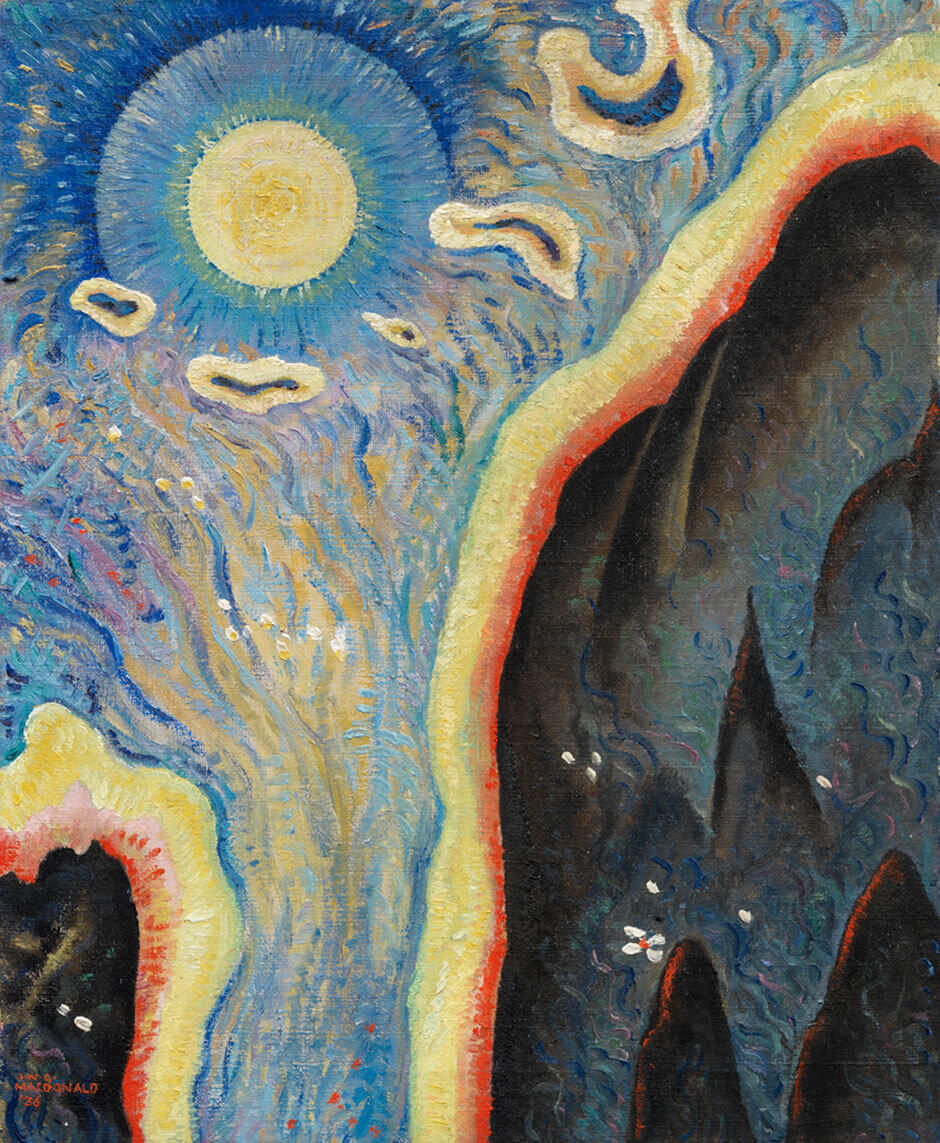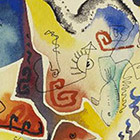Etheric Form 1936 (dated 1934)

Jock Macdonald, Etheric Form, 1936 (dated 1934)
Oil on panel, 38.1 x 30.5 cm
Vancouver Art Gallery

In this small work, with its shimmering imagery and its richly painted ground, Macdonald achieved the perfect realization of his struggle to portray the nature of cosmic reality. Like Departing Day, this lyrical semi-abstract work was created in October 1936, during the flourish of inspiration that overwhelmed the artist during the last few weeks of his stay in Nootka Sound.
The painting represents a symbolic statement about the nature of the universe. A fine network of lines fills the surface against the rich purple ground, where a single orb is poised in the balance. Space is compressed. Fascinated by contemporary scientific discoveries, Macdonald wrote in one of his notebooks:
If we wave our hand we can feel the obstruction of the air but we cannot feel the Ether. We think of our earth as very solid and we know it is rushing around the sun at the enormous speed of 60,000 miles per hour, but it finds no obstruction in the Ether, there is no retardation of its velocity; and yet the study of radio-activity has quite lately shown us that the Ether is … millions of times denser than [iron]; and yet it permeates all matter like a sieve.
He concluded that this enigma was but one more “example of Positive and Negative, the Invisible, the Ether, as the Real plus the Visible, the Material Universe as its Negative, the Unreal,” adding that “with perfect perception we should know that the only reality is the spiritual, the Here comprising of all space and the Now of all time.”
On his return to Vancouver in 1936 Macdonald continued the exploration of abstraction in the series of works he called his modalities. In 1938 he submitted four of them—Day Break, (May Morning), dated 1936 but most likely painted in 1937 in Vancouver, given the fact that it is oil on canvas, and Rain, Winter, and Chrysanthemum (all 1938)—to the British Columbia Society of Fine Arts show at the Vancouver Art Gallery. They must have shocked many viewers, given that, as late as 1928 in Vancouver, many of the local critics found the modernism of the Group of Seven beyond their comprehension.

 About the Author
About the Author
 More Online Art Books
More Online Art Books
 Acknowledgements
Acknowledgements